
Broadcom HCPL-0931, this one took me quite some time...
The HCPL-0931 is a fast digital isolator. The datasheet specifies an isolation voltage of 2,5kVrms. However the maximum continuous operating voltage is just 150Vrms (300Vrms for the HCPL90xx). 3,3V and 5V TTL/CMOS signals can be transmitted at up to 100MBd. It is robust against common mode pulses with rise times up to 15kV/µs.

The HCPL-0931 contains two channels with opposite transmission directions. In parallel Broadcom offers other variants and also multi-channel isolators.

In the package you can find two long dies, which are placed next to each other with some distance between them.


The dimensions of one die are 1,9mm x 0,7mm.

The two dies differ just in a slightly different arrangement of bonding wires and a small round cutout in the top insulation layer that appears to expose a test pad.
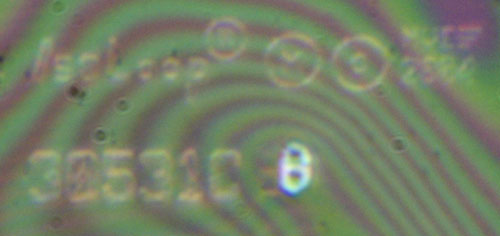
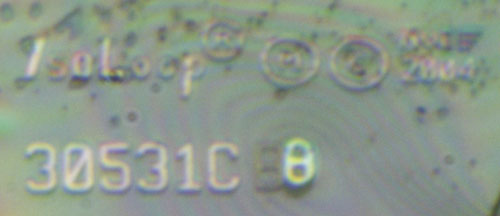

On one edge of the die is the word IsoLoop, the name for an insulation technique used by the company NVE. Next to the copyright signs the logo of the company NVE seems to be depicted, in which the horizontal lines of the E are extended to the right. NVE is an independent company but appears to have partnered with Broadcom. NVE has a very similar isolator in the IL612 from the IL600 series. Perhaps this is even the same die.
The design is apparently from 2004 and the internal designation is 30531CBB. The last two characters are shown with different materials than the first characters. It is quite possible that they document revisions to the masks used to build these layers.

In the presentation "NVE IsoLoop® Isolator Overview" NVE shows the basic design of their isolators. On a wafer there is a magnetic field sensor based on the GMR technology. The polymer layer that follows represents the device's insulating path. On top of the isolation there is the coil that generates the exciting magnetic field. The coil is protected by a passivation layer. A magnetic shield is applied on top of the passivation layer. This not only shields external magnetic fields, it also concentrates the magnetic field of the coil too.

The NVE presentation shows that the magnetic field is evaluated via a Wheatstone bridge. The use of a Wheatstone bridge guarantees a high robustness against external magnetic fields.

With the information so far it is already possible to reconstruct how the dies were arranged in the housing and how the bondwires were used.
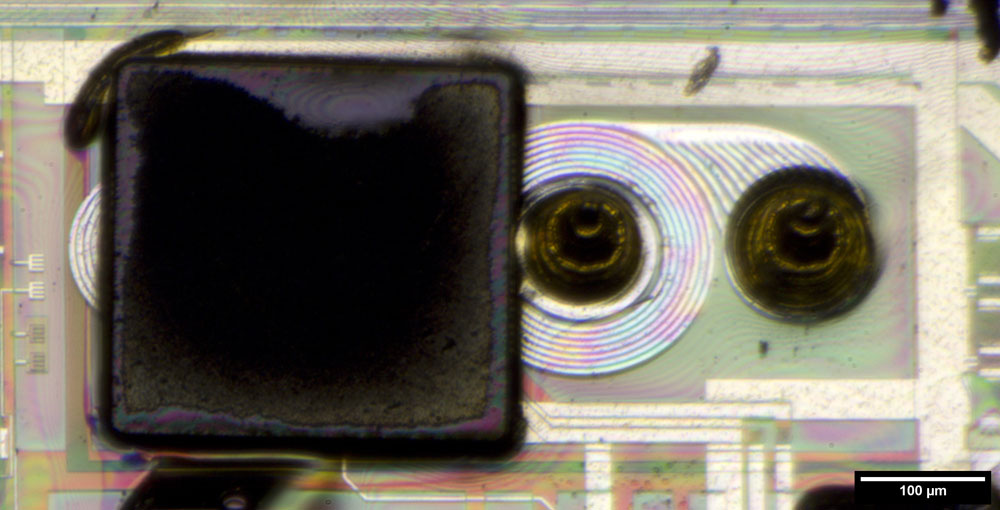
The core element, the magnetic circle, has a square, black shield. Parts of the coil arrangement can be seen on the sides of the shield.

NVE staff have written an IEEE article called "Linear Spin-Valve Bridge Sensing Devices." There the structure of a GMR-Wheatstone bridge is shown, which fits quite well to the HCPL-0931. The designation and logo are very similar too.
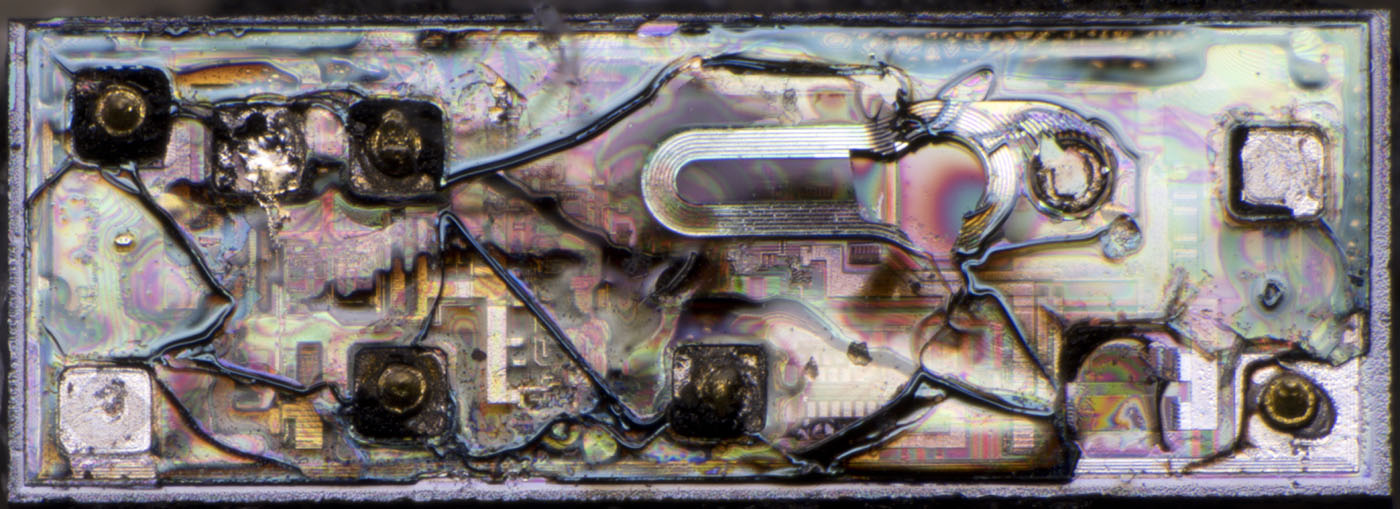
The polymer layer on the die can be gradually decomposed by applying a well-dosed, increased temperature.
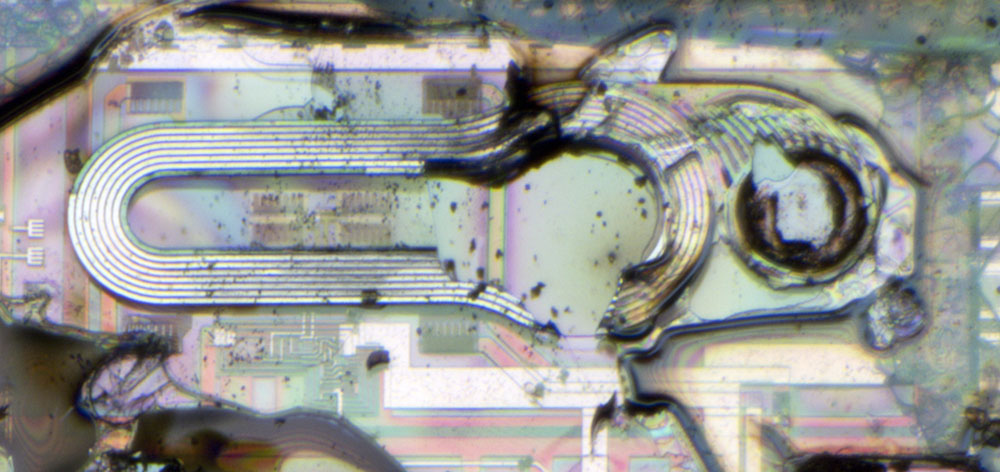
Here the magnetic shielding is already missing, the coil can still be seen.

The polymer layer can be decomposed almost completely, but care must be taken not to degenerate the remaining structures as well.
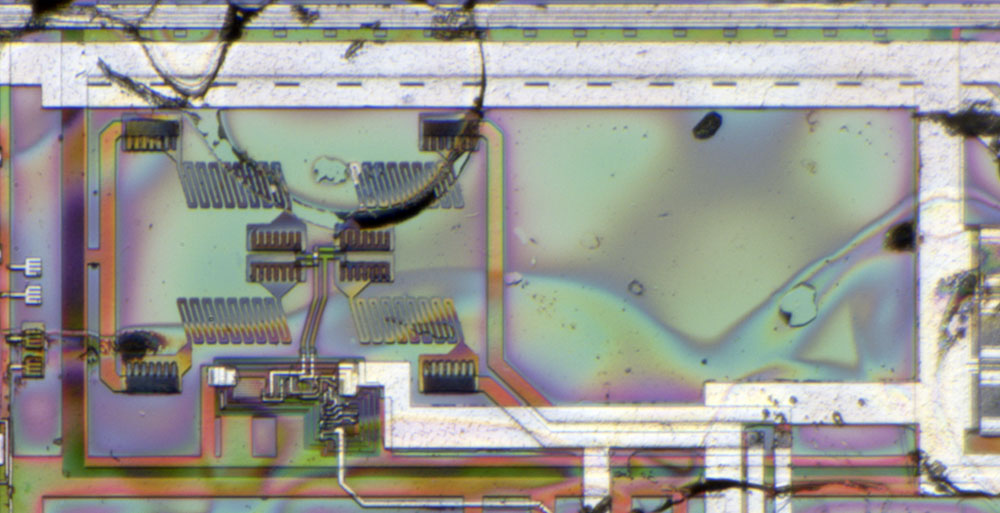
Under the remains of the coil, the Wheatstone bridge is revealed.


The supply voltage is fed to the Wheatstone bridge from the right. The reference potential is located on the left. The four GMR elements (yellow) are routed in serpentines. The contacts between the GMR elements and the continuing lines are conspicuously large.
The evaluation of the differential voltage of the Wheatstone bridge takes place directly below the GMR elements, so that as little interference as possible couples in on the line up to there. The processed signal is output downwards.

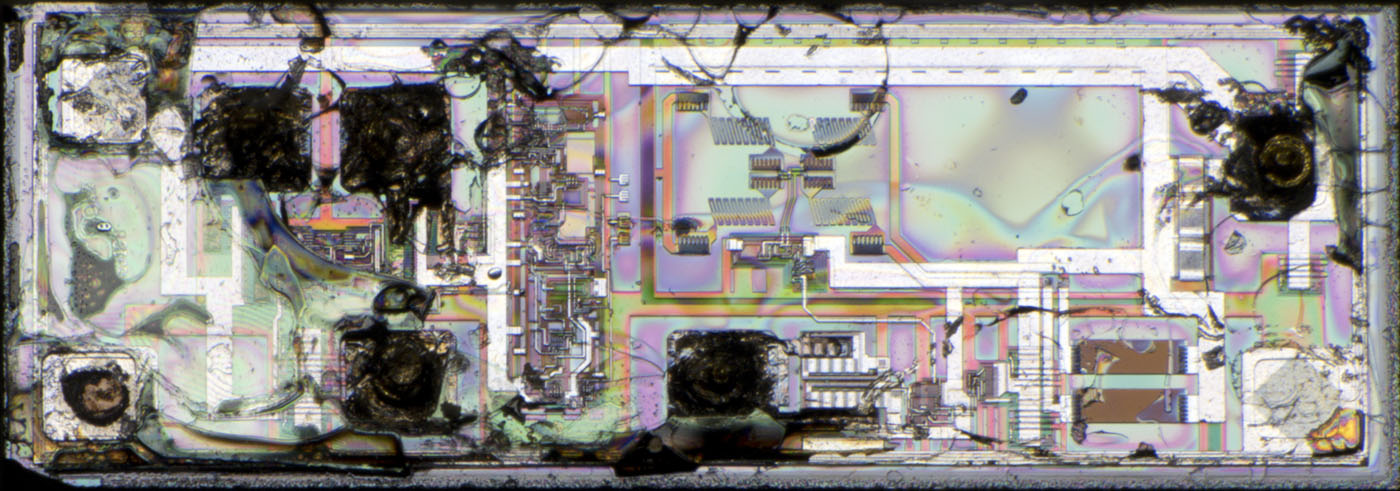
The polymer layer cannot be completely removed without also endangering the remaining structures.
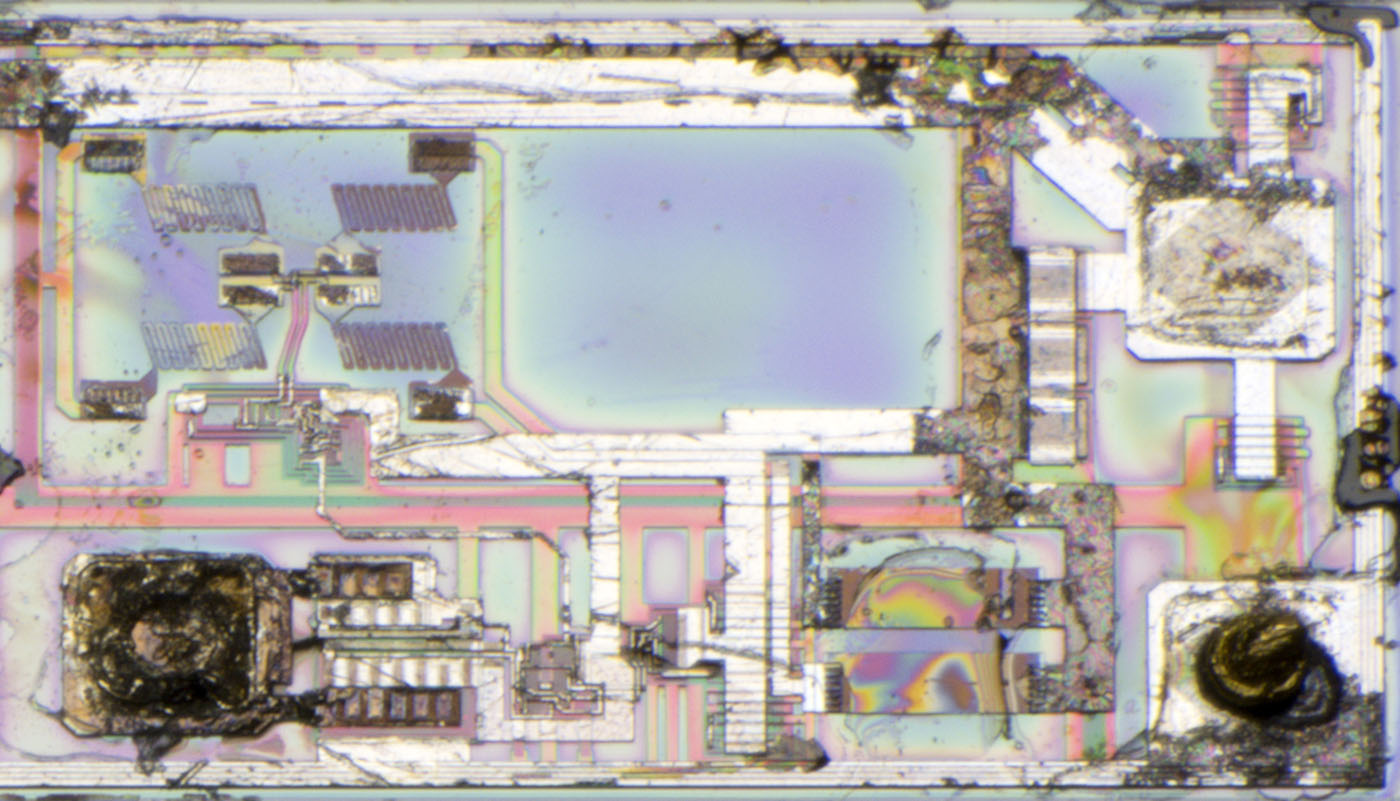

The receiver occupies the right area of the die. The structures around the Vdd bondpad appear to be protective structures.
Two Vdd potentials are fed to the Wheatstone bridge via two resistors. Above these two resistors, the polymer layer was cut out and the traces of an alignment can be seen.
The operational amplifier of the Wheatstone bridge is followed by a driver and a push-pull output stage, which serves the output of the HCPL-0931.
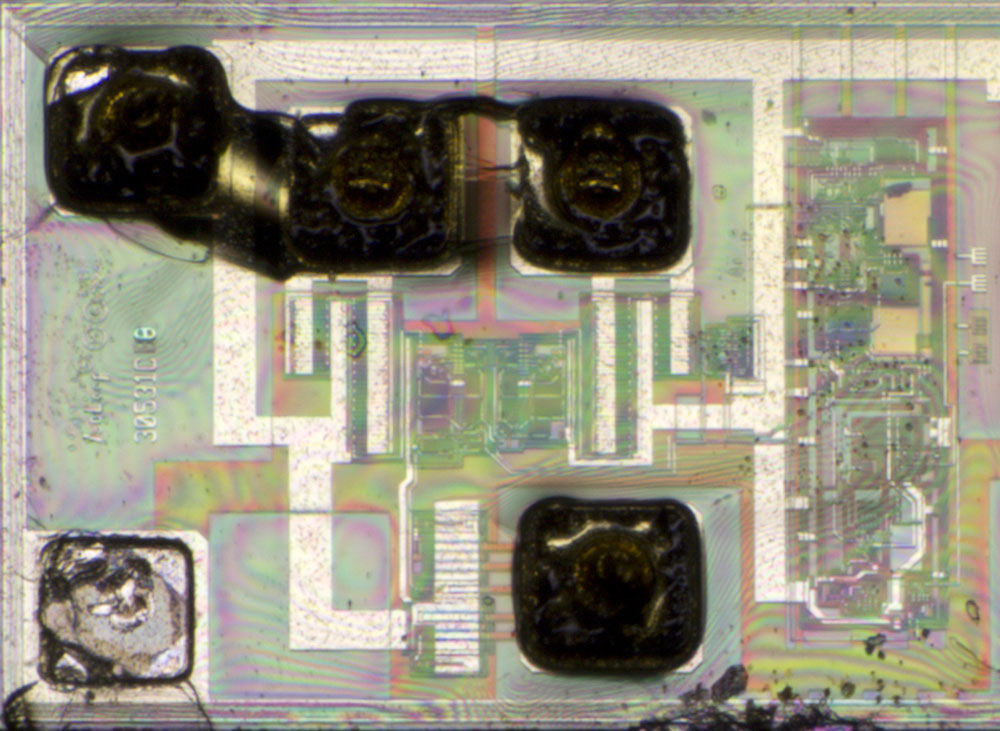


On the left side of the die is the receiver section. Below the bondpads, which are connected to the coil on the other die, you can see push-pull transistors. Consequently, the driving is done with an H-bridge. The drivers are integrated between the push-pull transistors. The structures at the input bond pad certainly represent some protection function.
The function of the circuit on the right side remains unclear. It is only connected to the driver of the transmitter coil. According to the NVE presentation, the signal to be transmitted is not modulated. Therefore an oscillator can be excluded. Maybe it is a current control, which ensures that the receiver side is sufficiently modulated, but not overdriven.

The uncovered test pad described above could have been used for an adjustment of such a control.
https://www.richis-lab.de/iso02.htm 